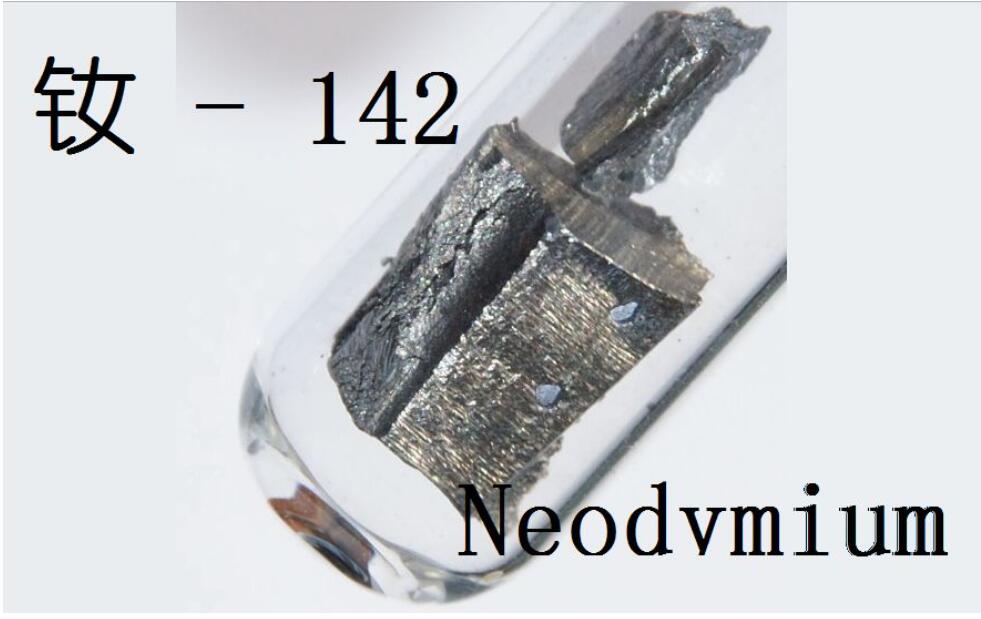Neodymium, element 60 of the periodic table.
Neodymium is associated with praseodymium, both of which are Lanthanide with very similar properties. In 1885, after Swedish chemist Mosander discovered the mixture of lanthanum and praseodymium and neodymium, Austrians Welsbach successfully separated two kinds of “rare earth”: neodymium oxide and praseodymium oxide, and finally separated neodymium and praseodymium from them.
Neodymium, a silver white metal with active chemical properties, can rapidly oxidize in air; Similar to praseodymium, it reacts slowly in cold water and quickly releases hydrogen gas in hot water. Neodymium has a low content in the Earth’s crust and is mainly present in monazite and bastnaesite, with its abundance second only to cerium.
Neodymium was mainly used as a colorant in glass in the 19th century. When neodymium oxide was melted into glass, it would produce various shades ranging from warm pink to blue depending on the ambient light source. Don’t underestimate the special glass of neodymium ions called “neodymium glass”. It is the “heart” of lasers, and its quality directly determines the potential and quality of laser device output energy. It is currently known as the laser working medium on Earth that can output the maximum energy. The neodymium ions in neodymium glass are the key to running up and down in the “skyscraper” of energy levels and forming the maximum energy laser during the large transition process, which can amplify the negligible nanojoule level 10-9 laser energy to the level of the “little sun”. The world’s largest neodymium glass laser fusion device, the National Ignition Device of the United States, has elevated the continuous melting technology of neodymium glass to a new level and is listed as the top seven technological wonders in the country. In 1964, the Shanghai Institute of Optics and Fine Mechanics of the Chinese Academy of Sciences began the research on the four key core technologies of continuous melting, precision annealing, edging and testing of neodymium glass. After decades of exploration, a major breakthrough has finally been made in the past decade. Hu Lili’s team is the first in the world to realize the Shanghai ultra intense and ultra short laser device with 10 watt laser output. Its core is to master the key technology of large-scale and high-performance laser Nd glass batch manufacturing. Therefore, the Chinese Academy of Sciences Shanghai Institute of Optics and Precision Machinery has become the first institution in the world to independently master the full process production technology of laser Nd glass components.
Neodymium can also be used to make the most powerful permanent magnet known – neodymium iron boron alloy. Neodymium iron boron alloy was a heavy reward offered by Japan in the 1980s to break the monopoly of General Motors in the United States. Contemporary scientist Masato Zuokawa invented a new type of permanent magnet, which is an alloy magnet composed of three elements: neodymium, iron, and boron. Chinese scientists have also created a new sintering method, using induction heating sintering instead of traditional sintering and heat treatment, to achieve a sintering density of over 95% of the theoretical value of the magnet, which can avoid excessive grain growth of the magnet, shorten the production cycle, and correspondingly reduce production costs.
Post time: Aug-01-2023
